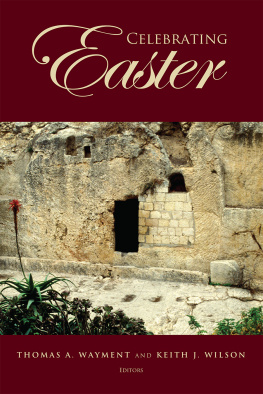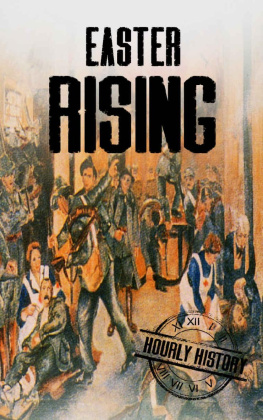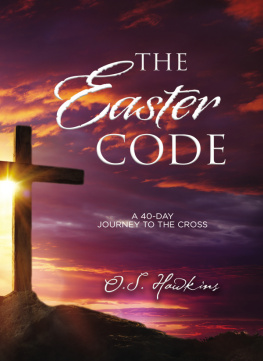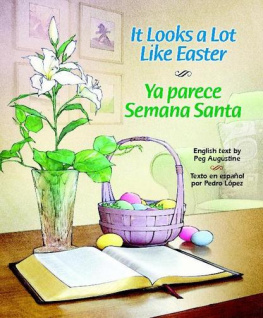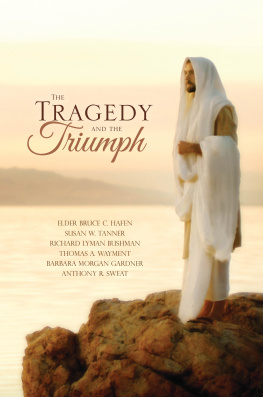Celebrating Easter
Thomas A. Wayment, Keith J. Wilson
2014 Thomas A. Wayment; Keith J. Wilson.
Any uses of this material beyond those allowed by the exemptions in U.S. copyright law, such as section 107, Fair Use, and section 108, Library Copying, require the written permission of the publisher, Religious Studies Center, 167 HGB, Brigham Young University, Provo, Utah 84602. The views expressed herein are the responsibility of the authors and do not necessarily represent the position of Brigham Young University or the Religious Studies Center.
Front cover: The Garden Tomb, Jerusalem. Used by permission, Z. Radovan/BibleLandPictures.com. Most scholars, including several Latter-day Saint specialists, have found evidence to suggest that the Garden Tomb may not be the exact location of the Saviors burial. However, the actual burial place may be within a few hundred feet of this location. Nevertheless, the peaceful garden, empty tomb, and reverent spirit here conform to the expectations of those who seek a reverent place to pray, read, and ponder New Testament passages describing Jesuss death, burial, and Resurrection.
Frontispiece: Carl Bloch, Doubting Thomas. Courtesy of Brigham Young University Museum of Art. All rights reserved.
Published by the Religious Studies Center, Brigham Young University, Provo, Utah
Foreword
Of all the events in the Saviors lifeHis birth, baptism, death, and Resurrectionearly Christians likely celebrated the day of the Resurrection before anything else. This celebration was first carried out on a weekly basis, as reflected in the shift from Saturday worship services (the Jewish practice) to Sunday meetings (the Christian practice). Even before the early church officially changed to meeting on Sunday to commemorate the Resurrection, there was likely some recognition of the importance of Sunday.
As time progressed and early Christians began meeting every Sunday, they also began to celebrate and remember the actual day on which Jesus Christ was resurrectedthe first Sunday of the Passover feast. Initially this celebration was closely linked with the date of the Jewish Passover, falling on the first Sunday of Passover, but in later decades as the Christian Church became more formally distinct from Judaism, Christians began celebrating the Resurrection of Christ according to their own calendrical calculations.
They remembered that Jesus was crucified on the eve of Passover, but because of certain peculiarities with the way the Jews managed their calendar, Christians felt that at times the celebration of the day of Jesuss Resurrection might be off by several weeks. Therefore, they were careful to determine each year through episcopal and later papal decreesometimes referred to as a festal letterthe exact date of the celebration of Christs Resurrection. It was so important to determine the correct date, in fact, that a sect of Christians known as the Quartodecimans were declared heretics by the orthodox church because they celebrated the Resurrection on a different day.
Initially this annual celebration was not named Easter. Christians in the East and West referred to the celebration using the term Pascha, derived from the Greek to pascha and the Hebrew term for Passover (pesah), a tradition that continues to this day (e.g. Latin, Paschalia; Italian, Pasqua; Dutch, Paschen). But beginning in the early Middle Ages, Christians in England began referring to the event under a new designationEaster. In reality, only English speakers refer to the celebration of Christs Resurrection using the term Easter (though it is related to the German Ostem), a word that many feel has a pagan origin. The link between the earliest celebration associated directly with Passover and the modern celebration of Easter is often more evident in other societies, where the modern word still clearly reflects the Passover of Christs Resurrection.
It is safe to say without equivocation that the Resurrection of Christ, which signaled to all humankind that the Atonement was complete, is the most important event in the salvation of men and women and the cosmos itself. That is not to say, however, that the celebration of the event has always received sufficient attention. For a variety of reasons, Christmas and the attendant celebration of Christs birth have received the most attention in the modern era even though the celebration of His birthday was a significantly later development. Ironically, it was not Christs birth that saved us but His suffering, death, and Resurrection. If there had been no suffering and death, there would have been no forgiveness of sin. If there had been no empty tomb, there would have been no triumph over death, and therefore no Christianity.
Easter celebrations in other denominations take on a variety of forms. Some celebrate the entire Passion Week (the final week of Jesuss life), which includes recognition of important events from that week: the Triumphal Entry (Palm Sunday), the Last Supper (Maundy Thursday), the Crucifixion (Good Friday), and the Resurrection (Easter Sunday). Other denominations begin the celebrations in February to celebrate Shrove Tuesdaythe day before Ash Wednesday, when Lent beginswhile some extend the celebration into May when they celebrate Pentecost, which occurs fifty days after Easter. For those unfamiliar with them, these celebrations may seem foreign even though each of them has a strong biblical precedent. The issue is even more pronounced in the western United States, where Good Friday is not typically observed as a public holiday. Many Christians attempt to extend the celebration of Easter in recognition of the importance of that day.
Though Latter-day Saints have not traditionally celebrated all of the events typically associated with Easter, these events are an important focus of the talks given in the spring general conference. Moreover, Latter-day Saints recognize the comparatively greater importance of the Resurrection of Christ in comparison to His birth even if their outward celebration of those two holidays does not reflect those sentiments. Easter will always have profound meaning for Latter-day Saints, and while we may never officially observe all of the events associated with the final week of His life as other Christians do, we join with them in celebrating the crowning achievement of that weekthe Resurrection.
In 2003, the Brigham Young University faculty held its first conference on the life of Jesus Christ in an attempt to gather thoughts on the meaning of His life for us both as Latter-day Saints and as participants of a wider world. In conjunction with the conference, we published a book of collected articles focusing on the Saviors final hours. After years of training and research, we hoped to be able to enter into the important academic discussion of Christs life with fresh insights and with the most recent archeological and textual discoveries. We stood on the shoulders of great men and women of our faith who had made this discussion possible, many of whom passed away before the Dead Sea Scrolls, the Nag Hammadi Codices, and other important discoveries had come to light. We wanted to renew their work again in our own day, adding to the discussion the knowledge of our time.
The first volume and the associated conference, which we held at BYUs Salt Lake City extension center, were delightful successes, and many responded with positive notes and encouragement, some even suggesting that we should consider Jesuss entire life anew. So we pressed forward in order to produce two more volumes on the life of Jesus, effectively covering His life from birth and to His final week to His Resurrection. The first book was republished as the third volume in the series; we entitled the whole

